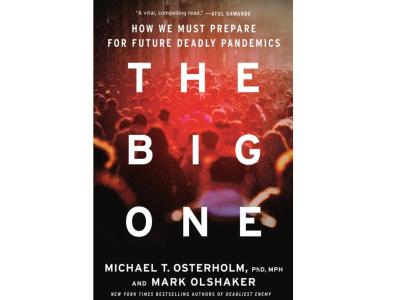Public transit use drops 73% in pandemic, with vulnerable most affected
Public transportation usage dropped 72.7% across the United States from Feb 15 to May 17, but vulnerable populations and essential or physical workers were most likely to continue using it, according to a study published yesterday in PLOS One.
The study used data from the Transit app across 63 metro areas, as well as applicable surveys and studies to measure demand timeline and changing demographics.
Hourly traffic data revealed that weekday and weekend demand came to resemble each other more during the pandemic, highlighting that those without orthodox 9-to-5 schedules—typically, essential workers—were most affected, according to the researchers. The biggest indicator of continued transit usage, however, was race.
The larger the black population in a city, the less decline in demand for public transit. Women made up 70% of black passengers. Many others who needed to commute via public transport for physical jobs were Hispanic, which corresponds with 2018 statistics that show that Hispanics have the lowest percentage (22%) of management, professional, and related occupations compared with white, black, and Asians.
COVID-19 awareness, indicated by "coronavirus" searches on Google, also had a significant association with less public transit use, but it was not as influential as ethnicity, occupation, and even age. The relative ratio of bus passengers aged 45 to 64 doubled when comparing April 2020 with September 2019, whereas use by children and those aged 25 to 44 dropped.
"It is a dramatic social equity story about who has to move during the pandemic," said study co-author Harvey Miller, PhD, in an Ohio State University (OSU) press release.
Coastal cities saw a decline in demand sooner compared with Midwest and Southern cities. College towns were among those that saw the steepest falls, most likely in relation to school ordinances. Ridership in other cities, like Austin, Texas, likely reflected political action, as declines in transit use happened on the same day a local state of emergency was declared.
Nov 18 PLOS One study
Nov 18 OSU press release
Mink a possible animal reservoir for COVID-19
A Danish study today in Emerging Infectious Diseases demonstrates the rapid spread of COVID-19 in farmed mink, the emergence of novel virus variants, and viral transmission to people.
SARS-CoV-2 infection has been documented in a variety of animal hosts, including ferrets, costs, dogs, hamsters, and nonhuman primates, but not in pigs or chickens. Previous studies have identified COVID-19 in farmed mink in the Netherlands and in Denmark.
Researchers identified three mink farms—of 1,200 total in Denmark—for investigation because of COVID-19 in people linked to the farms. Mink blood, throat, nasal, and fecal swab samples were tested via reverse-transcriptase polymerase chain reaction, along with feed and air samples from each farm. Viral genomes were sequenced to analyze relationships between virus variants, and animal serum samples were tested for SARS-CoV-2 antibodies.
The researchers found high initial seroprevalence (97% and 67%) for sampled animals on two farms, but only 3% seroprevalence for a third farm, suggesting a more recent introduction. Significantly, when animals on the farm with low prevalence were retested 12 days later, the seroprevalence had risen to 97%, indicating rapid transmission among farmed animals and the possibility of major virus exposure to persons working with mink.
Air samples within cage houses tested positive for the virus at two farms, but not feed or other air samples.
Viral sequences from mink on the first farm closely matched those of a human case, diagnosed in mid-May, leading researchers to suspect human introduction of the virus. A viral variant present at one farm appears to have spread to the other two farms and may indicate adaptation to mink and increased transmission ability. The same variant was detected in subsequent linked human cases.
"There appears to be some risk of virus transmission to persons working with infected mink as well as for their contacts and thus, indirectly, for the public," the authors wrote.
The mink infections occurred with little apparent clinical disease or animal mortality, making viral spread difficult to detect. "Mink farms could represent a serious, unrecognized animal reservoir for SARS-CoV-2," they added.
Nov 19 Emerg Infect Dis study
COVID-19 infection not linked to poor pregnancy outcomes
A large Texas hospital study today in JAMA Network Open found that SARS-CoV-2 infection during pregnancy was not associated with adverse pregnancy outcomes. Neonatal infection occurred in 3% of infants—primarily among asymptomatic or mildly symptomatic women—and hospitalization rates for infected mothers were similar to those of nonpregnant women.
Researchers evaluated 3,374 pregnant women who delivered infants from Mar 18 to Aug 22 at Parkland Health and Hospital System in Dallas—252 of whom tested positive for SARS-CoV-2, the virus that causes COVID-19.
There were no differences in age, parity (number of live births), body mass index, or diabetes among infected and noninfected women, but SARS-CoV-2 positivity was more common among Hispanic women. Women of Hispanic ethnicity accounted for 75% of the cohort, but they represented 91% of the SARS-CoV-2–positive women. Thirteen infected women (5%) had severe or critical illness.
Infected women did not have a significantly higher frequency of preterm birth, severe preeclampsia, or cesarean delivery for abnormal fetal heart rate compared with SARS-CoV-2–negative women (52 women [21%] vs 684 women [23%]; relative risk, 0.94; 95% CI, 0.73 to 1.21; P = .64), and there were no stillbirths among women with COVID-19 during pregnancy.
No difference between groups was observed for secondary outcomes such as placental abruption, infection of any type, and excessive blood loss, and placental abnormalities were not associated with disease severity.
Among 188 tested neonates, 6 (3%) were positive for COVID-19, and all were born to women whose infections were diagnosed during the third trimester. The researchers caution that they were unable to determine whether diagnosis of early neonatal SARS-CoV-2 infection was the result of vertical transmission—from mother to child—or via another route.
In contrast with previous studies showing high rates of hospitalization in pregnant women, the hospitalization rate for infected women in this study was similar to rates among nonpregnant women (6% hospitalized vs 5.8% among nonpregnant women).
"Our findings that 5% of all delivered women with SARS-CoV-2 infection present with or develop severe or critical illness are novel and lower than rates in previous reports," the authors note.
Nov 19 JAMA Netw Open study











